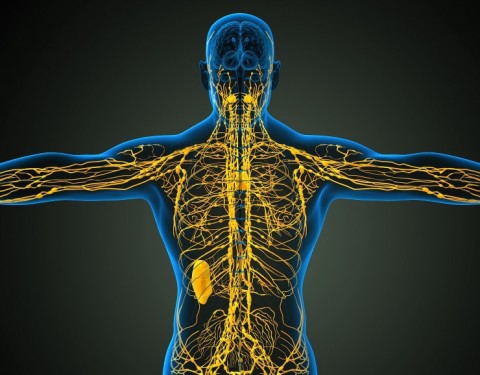

Susan Thomas, a faculty member of the Petit Institute for Bioengineering and Bioscience, is at the forefront of research into the targeted delivery of drugs to battle cancer.
Thomas and her lab team have designed lymphatic-seeking nanoparticles to promote anti-tumor immunity and hinder tumor growth, a strategy supported by a three-year grant from the Susan G. Komen Foundation.
But, before this form of immunotherapy can be deployed, Thomas and her team are gathering important intelligence about the enemy, to ultimately improve lymphatic targeting ability.
“One thing that’s not really understood is how lymph nodes in healthy individuals are different from those in someone with a disease. That information can critically impact our ability to target therapeutics,” says Thomas, who led a team of mostly undergraduate students in research that was recently published online in The FASEB Journal.
“This is a first step toward a better understanding. But it’s not just what are the cellular differences or histological differences – the things that clinicians think about. We’re starting to define more the way engineers think of systems,” says Thomas, main author of the paper, entitled “Lymph node biophysical remodeling is associated with melanoma lymphatic drainage.”
Thomas describes the research as a basic analysis of how tumor lymphatic drainage affects the lymph nodes.
“We detect a lot of tumors or cancers when the patient detects a stiff growth,” says Thomas, assistant professor in the Woodruff School of Mechanical Engineering, who recognizes that there are mechanical changes in the tumorous tissue, which make it different from healthy tissue.
“We wanted to see if the same kind of change is happening in the lymph node,” says Thomas, whose co-researchers on the project included one Ph.D. student (Nathan Rohner) and seven undergrads (Sara Tuell, Alex Warner, Blair Smith Younghu Hun, Abhinav Mohan and Manuela Sushinitha). “And what we found is that there actually are stiffening responses in the lymph nodes, and it was associated specifically with tumor lymphatic drainage.”
A better understanding of the biophysical changes associated with tumor lymphatic drainage will inform future studies and, ultimately, lead to better ways to diagnose and treat cancer patients.
CONTACT:
Communications Officer II
Parker H. Petit Institute for
Bioengineering and Bioscience
Jerry Grillo
Communications Officer II
Parker H. Petit Institute for
Bioengineering and Bioscience
